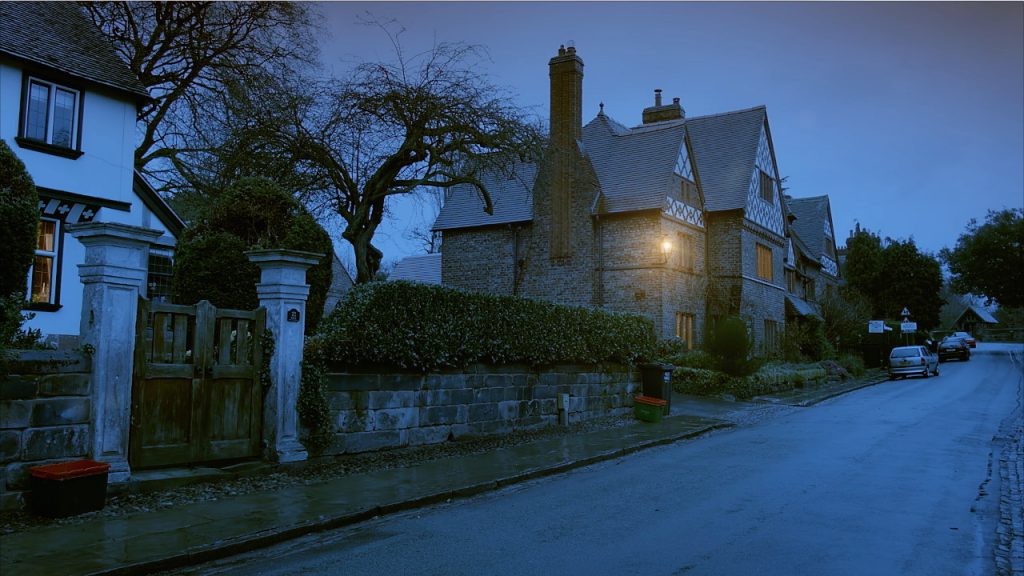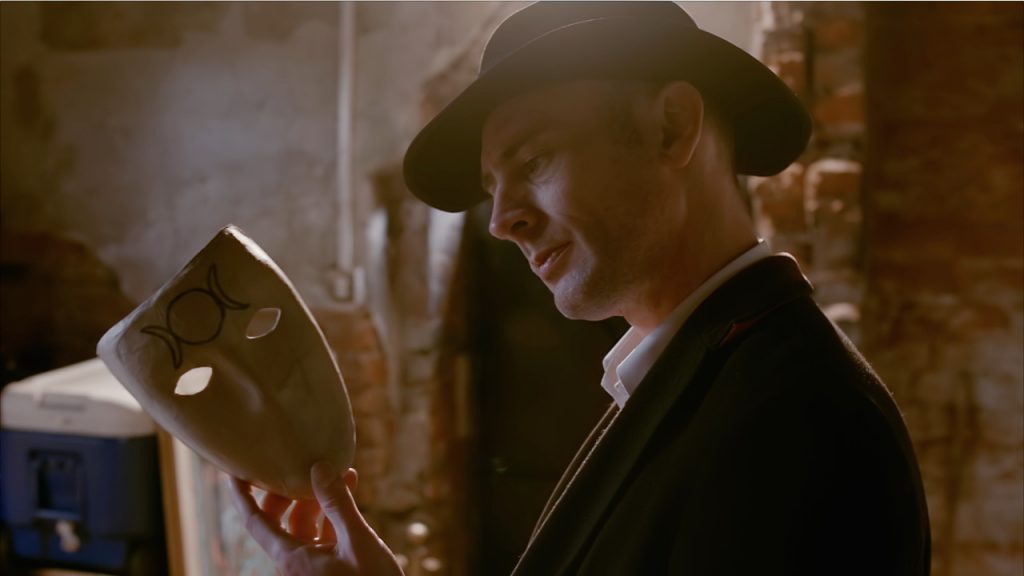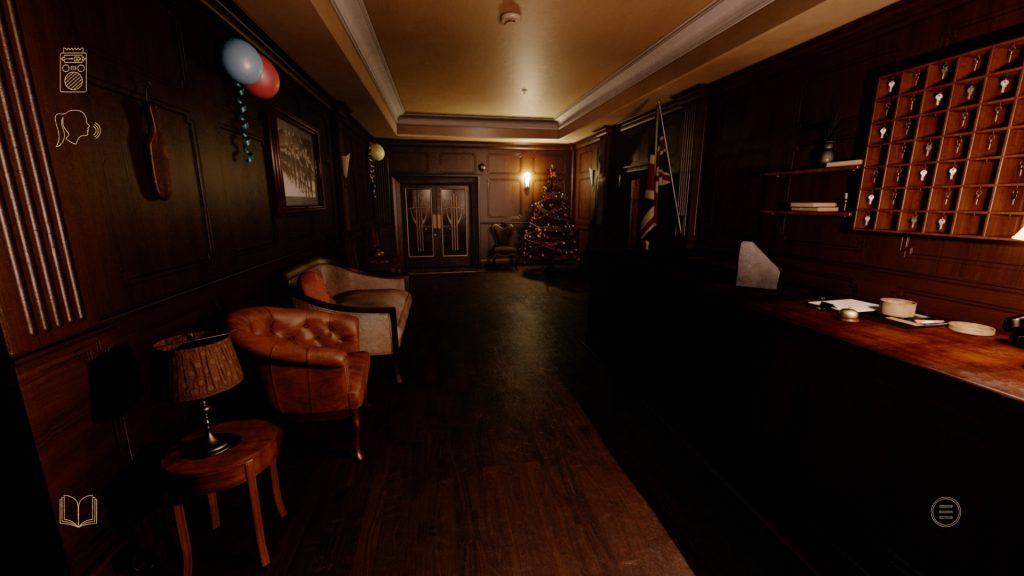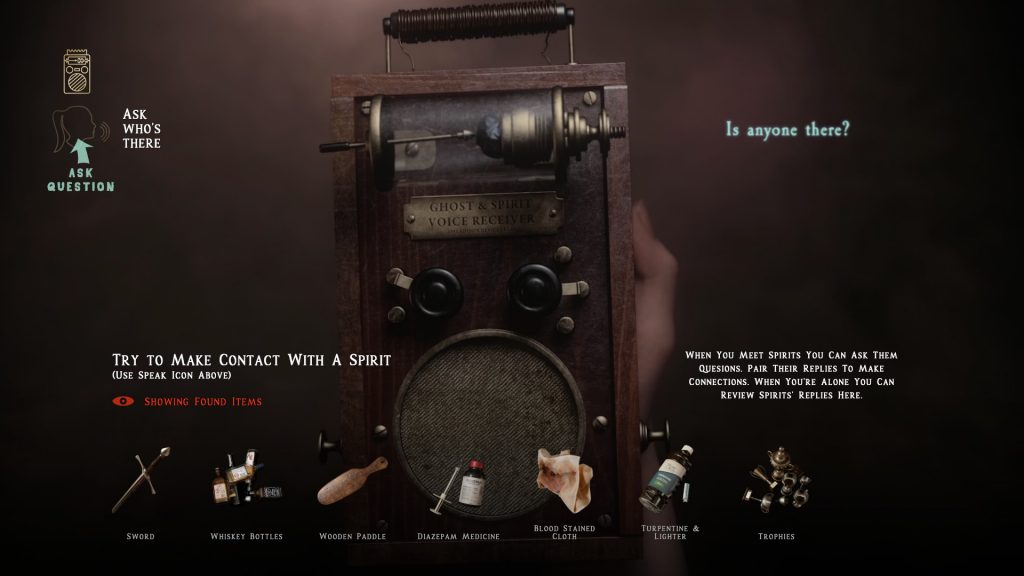Last month, I reviewed Tim Follin’s At Dead of Night – an innovative horror game that made phenomenal use of the notoriously finicky FMV format. Whilst doing my standard background research, I realised that developer Tim Follin was actually something of a quiet legend of the early games industry (not that he’s likely to refer to himself as such) – the man composed music for games across a huge spectrum of consoles, for big names like Ecco the Dolphin and Gauntlet just to name a couple.
It was plain to me after playing At Dead of Night and having a short correspondence with Tim that the story behind his career focus’ shift was worth talking about. At Dead of Night is currently enjoying a big moment, so the time’s never been better to check in with the man behind one of the most interesting horror experiences of recent years. So, without further ado, here’s Tim Follin’s story in his own words!
So, first of all, you actually started out as a video game music composer, and worked on some pretty big titles. You returned to the industry after quite a long break – what inspired it? What was the transition from composer to developer like?
“I was writing music from when I left school at 16 for about 15 years in all. After that long I was really burned out with the whole thing and I was finding it increasingly difficult to produce the ever increasing amount of music needed for games, so I knew I needed to do something different. More than half of that time I’d been freelance and had been playing around with some game ideas with my brothers and we developed an idea for an audio-only adventure game you could play in the dark, but this was before smartphones existed, so we never managed to find a good technological fit for the idea and we abandoned it.
At the same time I started pursuing an interest in film making and I made a few ultra-low budget short films, one of which won a film competition and eventually led to a job at a local TV station making commercials and title sequences for TV programmes. You had to do pretty much everything yourself there, so I started learning how to use software like After Effects and 3ds Max purely to create the graphics needed to go with the TV commercials.“

“I eventually found my niche as a DP (director of photography) and visual effects person and became a partner in a new company making TV commercials, but I soon went freelance again to spend more time with my two kids and found myself with some (though not much) free time.
It was while looking through some old game design notes I realised that devices like the iPhone could run that old audio adventure idea, but also I realised I knew enough about filming to create a video version of it to run on iPad, so I began learning to code again and developing that, which eventually became Contradiction. So although I’ve arrived back at games, it feels like a completely new experience now. I don’t think anyone I worked with back in my early days would have suspected I’d be doing this now!“
You’ve delivered some very well received FMV games – Contradiction has been described as one of the best FMV experiences ever made. What is it that appealed to you about that format in particular?
“I’m not sure that it did particularly appeal to me to be honest! It wasn’t that I had a burning ambition to create an FMV game and in fact I didn’t really know anything about FMV as a genre when I created Contradiction. I’d developed these skills as a DP and sound producer and I had these old game ideas I’d been working on, so I knew there was probably a way of putting those skills to use to make something. I also had to learn to code in order to make it happen, but I had some experience coding at the start of my game music career, so this was quite fun to get back into.“

“The central game mechanic of Contradiction was the best solution I could come up with at the time to solve the problem of how to create a genuinely playable game out of nothing but pre-recorded audio (or video), while avoiding the usual route of a ‘choose your own adventure’ mechanic, which always seems pointless to me.“
Would you like to see FMV games become more mainstream, or are they better off as niche experiences?
“I suspect they’re going to remain niche experiences for the foreseeable future at least. In my experience they require a lot of experimentation and trial and error to make work, because the format is so limiting and the illusion of being able to control a movie, which is essentially what the format tries to achieve, so easily broken. Also I suspect larger companies don’t want to get involved with a genre still associated with cheap, amateur and plain bad productions. I think investing in the sort of R&D needed to make something of genuine quality is a risk larger companies would want to avoid.“
Where do you even begin with making an FMV game like this as a small operation?
“Someone asked me recently what I start with when creating these game concepts and I said that I have to have an atmosphere and mood in mind first, but that’s not really true; the atmosphere and mood are vital motivations to keep going, but with FMV the start point is always pinning down a solution to the same basic problem: how to create the most game-like experience from linear chunks of video. Both my games are essentially different solutions to this same problem. Everything else grows from that seed.“

In your days as a game composer, it’s said you felt like not listening to the work of your contemporaries was a benefit to your career. Is that the case with your game development too?
“Definitely! My experience of games these days comes almost exclusively from watching my kids play them rather than playing them myself, but also there aren’t really than many FMV games out there. Certainly with video-based games the point for me is coming up with new ways to solve that old problem. I’ve discovered over the years that I’m only really motivated by this sort of problem solving, so it has to be something I’ve worked out myself. I don’t find any motivation in reproducing a version of something that already exists, regardless of how good it is.
I think I’ve spent my life trying to prove to myself that I can work things out, probably because I spent my school life thinking I couldn’t!”
How do you feel about At Dead of Night right now? Is it something that you feel like you’ll have to continue tweaking for a while?
“I’ll probably keep tweaking for the moment but I’m getting a bit burned out with it now so possibly I might call it a day at some point and concentrate on what to do next instead.“
Jimmy is terrifying in a way not many horror antagonists have achieved. He feels like such a tangible human threat contrasted against the ghosts – how was that achieved technically?
“Well he IS real in that he’s a real person! I think the fact that Huld really gave it everything shines through, it’s a seriously strong performance so that’s a big bonus. Deeper than that I think it’s to do with knowing what you’re watching on an unconscious level. For instance there are only a handful of sequences of Jimmy walking past the spy hole, but I think the fact that you know you’re watching an actor giving a performance has this strange effect whereby you see something slightly different in his expression and movement each time.“

“Watching what you know is a real actor forces you to connect with them in a way CG characters fail to achieve. When CG is able to truly and accurately reflect a real captured performance this might change, but even the very best examples in movies fall short at the moment, so it’s going to be a while before believable CG people arrive in games.“
You described At Dead of Night as experimental to me. In that case, has the experiment been successful? What have you learned from it?
“I’d have to say yes, because even if it disappears into obscurity a month from now it’s already had a far, far bigger effect than I ever thought it would have. Having worked on it in almost complete isolation for so many years, I really had no clue at all what people would think of it. I honestly doubted that anyone would even look at it, or be interested in it if they did look at it! So it’s been a complete shock and I’m still finding it hard to get my head around.“
Have you had any ideas for games that have been left on the cutting room floor, so to speak? Did you have to trim anything out of At Dead of Night you originally hoped to implement?
“I have tons of ideas for games, mostly terrible ones! Also this game had many, many incarnations before I arrived at the final game, so in terms of things left on the cutting room floor, the cutting room is full to the ceiling with unused stuff. Most of the time I’ve spent on this has been in an extremely protracted process of trial and error, so it’s mostly substandard stuff in the cutting room, but there are a few things I’d like to have been able to include that didn’t make it.
The original idea was set in a nightmare Maya couldn’t wake up from – I always liked the idea of being attacked and immediately waking up from the dream in Maya’s hotel room, but it didn’t really fit with the larger story. The ghost box was originally able to pick up all sorts of ghost radio stations from the past, which was always really atmospheric, but it was also pointless and confused the game play, so that got cut.“

“I also went through dozens of hotel designs before settling on the final one and there were elements from some of those designs, like walls of windows with moonlight shining through and doors opening into secret passages that didn’t make it into the final game. I think some of these ideas might make it into a sequel.“
Finally, At Dead of Night is enjoying some well deserved popularity at the moment. Would you consider it successful, and are you proud of what you’ve made?
“I’m not sure what being proud of something means to be honest. As I mentioned, I think I’m motivated fundamentally by problem solving, which happens throughout the development process, but afterwards I kind of sit looking at the thing I’ve made and don’t feel much apart from relief that I’ve finished it and I can move on to something else.
I’m obviously delighted that people are enjoying it, because the problem I set out to solve was how to make a game that creates the illusion of a believable and immersive experience and it seems to have worked for a lot of people, so I’m relieved about that. I’m not sure I’m proud of anything though!
I just Googled ‘being proud of yourself’ and found an article that states ‘Being proud of yourself is just another way of saying you have a strong sense of self-worth.’ So therein lies the problem I think.“
A massive thank you to Mr. Tim Follin for taking the time to speak with us. Head over to the Baggy Cat website for more information on At Dead of Night and Contradiction.